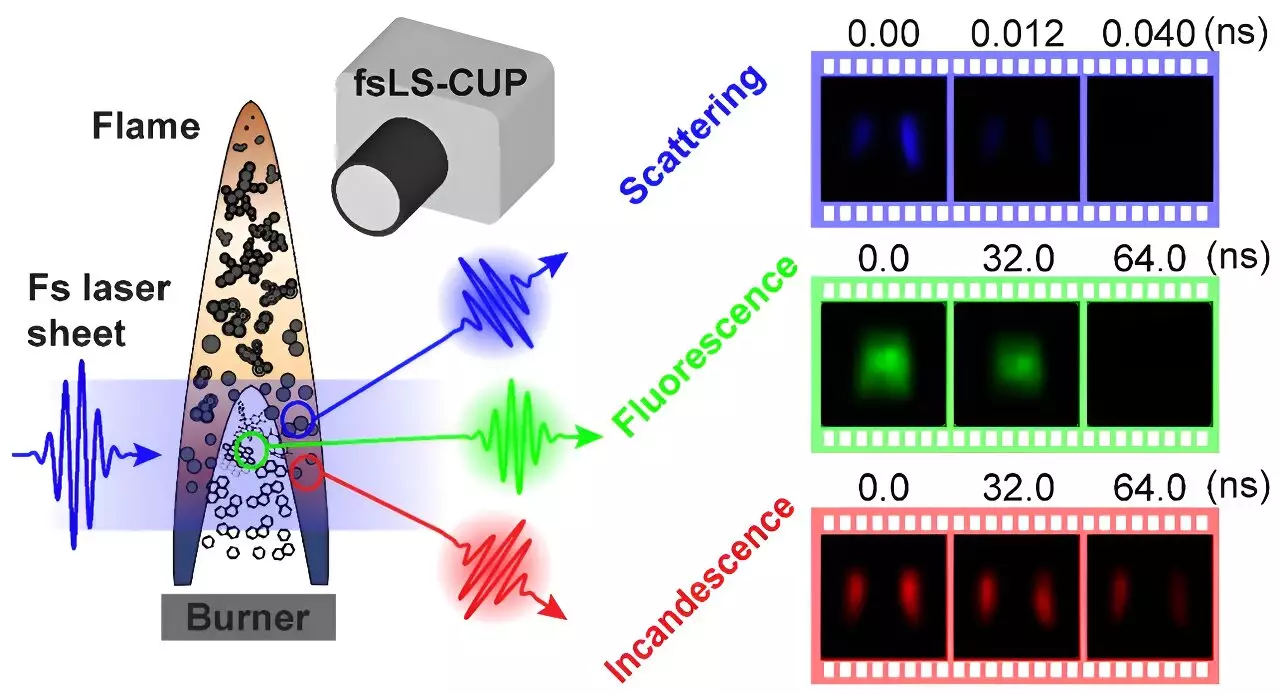Candle flames and airplane engines are everyday sources of combustion that generate soot—tiny solid particles formed from incomplete combustion of organic materials. Alongside soot, polycyclic aromatic hydrocarbons (PAHs) are also produced; these compounds are known for their toxicity to both humans and the environment. As pervasive pollutants found in various settings, they not only pose health risks but contribute to significant ecological damage. Surprisingly, these carbon-based particles are not just terrestrial nuisances. They exist in space, accounting for 10-12% of interstellar matter, and their unique properties have attracted interest for potential applications in electronics and sustainable energy solutions.
Researching these substances, particularly in combustion processes, is fraught with challenges. The fleeting nature of soot and PAH emissions—sometimes lasting only billionths to millionths of a second—poses a significant hurdle for scientists. Traditional imaging systems can only capture a limited number of frames per second, making it virtually impossible to visualize transient phenomena in real-time. Current methods often involve extensive post-processing, where researchers rely on the slow accumulation of sequential frames to stitch together a coherent image of fast events. This limitation has sparked a quest for innovative imaging technologies capable of capturing rapid motions with unprecedented temporal resolution.
A Groundbreaking Solution: Femtosecond Laser Sheet-Compressed Ultrafast Photography
Addressing these challenges, a team led by Dr. Yogeshwar Nath Mishra and Dr. Peng Wang at the California Institute of Technology introduced a state-of-the-art technique known as femtosecond laser sheet-compressed ultrafast photography (fsLS-CUP). This revolutionary method facilitates the capture of entire films of laser-flame interactions at an astonishing rate of 250 billion frames per second—a staggering 20,000 times faster than any existing imaging system. By employing a single femtosecond laser pulse, this approach allows for comprehensive, real-time imaging of PAH fluorescence and soot heating processes, alongside monitoring laser-soot interactions through elastic light scattering.
The implications of fsLS-CUP extend far beyond mere imaging. The capability to visualize chemical reactions and physical interactions at such high speeds enhances our understanding of the complex dynamics present in combustion environments. As Dr. Mishra elaborated, the work not only provides insights into the formation and growth of hydrocarbons and nanoparticles in flames but also serves broader scientific missions, such as NASA’s exploration of life’s origins and cosmic evolution.
Dr. Peng Wang highlighted that the advancement in ultrafast imaging opens doors to observing critical, rapid phenomena that are essential for furthering knowledge across multiple fields including physics, chemistry, biology, and environmental science. As researchers continue to innovate, the potential for new discoveries in transient phenomena appears limitless.
The broad applicability of fsLS-CUP is a notable aspect that sets this technique apart from traditional imaging methods. Adaptable across various experimental setups, this imaging tool offers the ability to analyze PAHs and carbon nanoparticles with significant detail and clarity. The ability to simultaneously extract information, such as two-dimensional fluorescence lifetimes of PAH molecules and the heating effects on soot particles, further underscores the technique’s versatility.
As expressed by Dr. Murthy S. Gudipati, understanding the formation of PAHs and soot not only enriches knowledge in a terrestrial context but also enhances insights into their existence in cosmic settings, particularly within hot environments of evolved stars. These discoveries can help illuminate our understanding of chemical processes at play in astrophysical phenomena.
The Future of Ultrafast Imaging Technology
The emergence of fsLS-CUP marks a significant milestone in the field of ultrafast imaging technology. Researchers are eager to explore the vast potential it holds, paving the way for advancements across diverse scientific disciplines. As scientists push the boundaries of imaging speed, spatial resolution, and overall fidelity, the continuous evolution of techniques like fsLS-CUP will undoubtedly yield an avalanche of new insights into the fundamental processes that govern both terrestrial and extraterrestrial phenomena.

